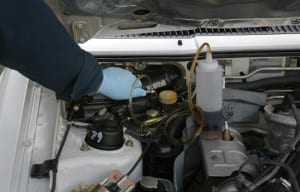
Your vehicle’s transmission is an intricate system that ensures smooth shifting between gears, ultimately powering your car forward. However, like any mechanical component, transmissions can encounter issues over time. Recognizing the signs of transmission trouble early can save you from costly repairs down the road. From strange noises to slipping gears, these symptoms can indicate underlying issues that require attention. In this comprehensive guide, we’ll delve into the common signs of transmission problems, helping you diagnose issues before they escalate. Whether you’re a seasoned car enthusiast or a novice driver, understanding these warning signals can empower you to take proactive measures to maintain your vehicle’s performance and safety.
Strange Noises: Identifying Unusual Sounds
Strange noises emanating from your vehicle can serve as early indicators of transmission issues. Pay attention to any whining, humming, grinding, or clunking sounds, especially when shifting gears. Whining noises often suggest low transmission fluid levels or worn-out bearings, while humming sounds could indicate a damaged transmission pump. Grinding noises may signal worn-out gears or synchronizers, requiring immediate attention to prevent further damage. Additionally, clunking noises during gear shifts might point to a problem with the transmission mounts or universal joints. Identifying and addressing these unusual sounds promptly can help prevent extensive transmission damage and costly repairs down the line.
Delayed Engagement: Recognizing Slow Response Times
Delayed engagement in your vehicle’s transmission can be a frustrating issue that affects your driving experience. When you shift gears and notice a lag in response time, it’s essential to recognize this symptom as it could indicate underlying problems within the transmission system. Here’s what you need to know to identify and address delayed engagement:
- Noticeable lag: Pay attention to any delays in acceleration after shifting gears, particularly when moving from park to drive or reverse.
- Potential causes: Delayed engagement can be caused by various factors, including low transmission fluid levels, worn-out clutch components, or internal pressure issues.
- Electronic issues: Faulty solenoids or sensors can also contribute to delayed engagement, disrupting the transmission’s ability to shift smoothly.
- Preventive action: Promptly addressing delayed engagement can help prevent further damage to the transmission and avoid costly repairs down the line.
- Professional assistance: If you experience delayed engagement in your vehicle, it’s advisable to seek the expertise of a qualified technician to diagnose and resolve the issue effectively.
Recognizing and addressing delayed engagement promptly is crucial for maintaining the optimal performance and longevity of your vehicle’s transmission. Don’t overlook this symptom—take action to ensure a smoother driving experience and avoid potential transmission problems in the future.
Fluid Leaks: Understanding Potential Causes
Transmission fluid leaks are a common sign of potential transmission problems that should not be ignored. Transmission fluid serves as a lubricant and coolant for various components within the transmission system. Therefore, any noticeable leaks could lead to decreased lubrication, increased friction, and ultimately, transmission failure. Leaks may occur due to damaged seals, gaskets, or transmission pan leaks. Identifying the location and color of the fluid can provide insights into the source of the leak. Red fluid typically indicates transmission fluid, while brown or black fluid may suggest a mixture of transmission fluid and engine oil. Addressing fluid leaks promptly through repairs or replacements can help maintain the optimal performance and longevity of your vehicle’s transmission.
Burning Odor: Interpreting Smells as Warning Signs
A burning odor emanating from your vehicle can signal potential transmission trouble, serving as a crucial warning sign that should not be ignored. This distinct smell often indicates overheating within the transmission system, which can result from various factors such as low fluid levels, fluid contamination, or excessive friction caused by worn-out components. Ignoring this burning smell can lead to severe transmission damage and even pose safety risks, such as the potential for fires. Therefore, it’s essential to address the underlying cause of the burning odor promptly through a thorough inspection and necessary repairs.
- Distinct Smell: Recognize the unique burning odor emanating from your vehicle.
- Overheating Indicators: Understand the potential causes of transmission overheating.
- Risk Factors: Acknowledge the safety risks associated with ignoring burning smells.
- Diagnostic Steps: Perform a thorough inspection to identify the source of the odor.
- Prompt Action: Take immediate action to address the underlying transmission issues to prevent further damage and ensure safety.
Interpreting burning odors as warning signs can help you identify transmission problems early, allowing you to take prompt action to prevent costly repairs and maintain the safety of your vehicle. If you notice a burning smell coming from your car, don’t hesitate to consult a professional mechanic to diagnose and address the issue promptly.
Slipping Gears: Detecting Loss of Power and Efficiency
Transmission slipping occurs when the transmission unexpectedly changes gears or struggles to stay in gear, resulting in a loss of power and efficiency. You may notice the engine revving higher than usual while driving, despite a lack of acceleration. This slipping sensation can occur due to various factors, such as low transmission fluid levels, worn-out clutch plates or bands, or internal pressure issues. Additionally, electronic problems, such as faulty solenoids or sensors, can also contribute to gear slipping. Ignoring this issue can lead to further transmission damage and eventual failure, jeopardizing the safety and performance of your vehicle. Therefore, promptly addressing any signs of gear slipping through proper diagnosis and repairs is essential to preserve the integrity of your transmission.
Warning Lights: Decoding Dashboard Alerts
When warning lights illuminate on your dashboard, it’s your vehicle’s way of communicating potential issues, and decoding these alerts is crucial for maintaining your car’s health and safety. Modern vehicles come equipped with onboard diagnostic systems that monitor various components, including the transmission. Understanding the meaning behind these warning lights can help you address problems early on, preventing further damage and costly repairs. Here’s a brief guide to decoding dashboard alerts:
- Check Engine Light: This light indicates a problem with the engine or emission control system, which can sometimes relate to transmission issues.
- Transmission Warning Light: Specifically dedicated to transmission problems, this light signals issues within the transmission system that require immediate attention.
- ABS Warning Light: This light alerts you to problems with the anti-lock braking system, which can impact the vehicle’s overall performance and safety.
- Oil Pressure Warning Light: Indicates low oil pressure, which can lead to engine damage if not addressed promptly.
- Battery Warning Light: Signals a malfunction in the charging system, potentially affecting various vehicle systems, including transmission operation.
Decoding dashboard alerts promptly through the use of diagnostic scanners can help you retrieve error codes, identify specific issues, and take the necessary steps to address them. Ignoring warning lights can lead to further damage and compromise the safety and performance of your vehicle. If you encounter any dashboard alerts, it’s essential to consult a professional mechanic to diagnose and resolve the underlying problems efficiently. Your vehicle’s transmission and overall health depend on proactive maintenance and timely repairs.
Rough Shifting: Evaluating Jerky or Unpredictable Gear Changes
Rough shifting refers to the sensation of jerky or unpredictable gear changes during acceleration or deceleration. You may feel a noticeable jolt or hesitation when the transmission shifts gears, disrupting the smoothness of your driving experience. This rough shifting can occur due to various factors, such as low transmission fluid levels, worn-out clutch plates or bands, or internal mechanical issues. Additionally, electronic problems, such as faulty solenoids or sensors, can also contribute to rough shifting. Ignoring this issue can lead to further transmission damage and compromise the safety and comfort of your driving. Therefore, promptly evaluating and addressing any signs of rough shifting through proper diagnosis and repairs is essential to ensure the optimal performance and longevity of your vehicle’s transmission.
Conclusion
Being attentive to the signs of transmission trouble outlined above can save you from costly repairs and potential safety hazards. Whether it’s strange noises, delayed engagement, fluid leaks, burning odors, slipping gears, warning lights, or rough shifting, each symptom serves as a warning sign that requires prompt attention. By addressing these issues early on, you can preserve the integrity and performance of your vehicle’s transmission, ensuring a smoother and safer driving experience. If you’ve noticed any of these signs in your vehicle, don’t hesitate to contact Last Chance Auto Repair for Cars Trucks. Located at 12052 S Naper Plainfield Rd, Plainfield, IL, United States, their team of experienced technicians can diagnose and repair any transmission problems, helping you get back on the road with confidence. Call them at 815-577-0327 and schedule your appointment today. Your vehicle’s transmission deserves the best care possible, so don’t wait until it’s too late.


